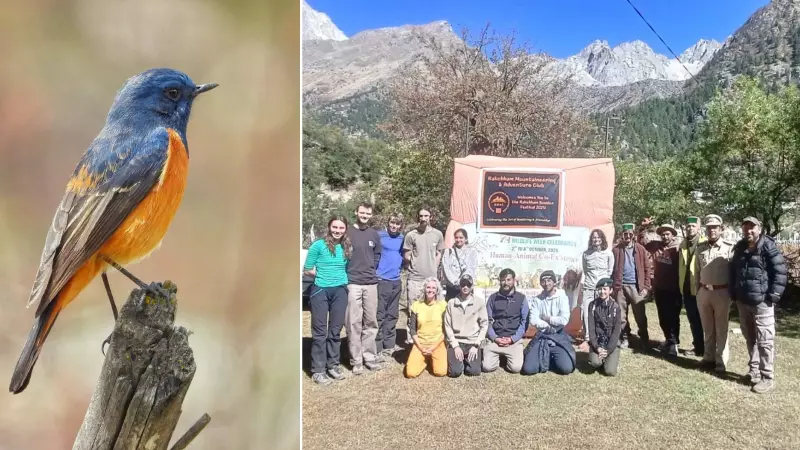
An extraordinary international bird watching event unfolded in the pristine landscapes of Himachal Pradesh's Rakchham-Chitkul Wildlife Sanctuary, where enthusiastic participants documented an impressive 35 different bird species during a comprehensive two-day programme.
The sanctuary, nestled in the breathtaking Kinnaur district, became a living laboratory for ornithologists and bird enthusiasts alike. Organized as part of the 'Azadi Ka Amrit Mahotsav' celebrations, this event attracted participants from diverse backgrounds, all united by their passion for avian life and conservation.
Rare Himalayan Species Take Center Stage
Among the notable sightings were several rare and captivating Himalayan species that left bird watchers in awe. The programme successfully recorded:
- Himalayan Monal - The stunning state bird of Himachal Pradesh
- Koklass Pheasant - A magnificent high-altitude species
- Western Tragopan - Among the most sought-after Himalayan birds
- Himalayan Snowcock - Thriving in the rugged terrain
- Snow Partridge - Perfectly adapted to cold environments
Conservation Meets Community Engagement
The event served a dual purpose beyond mere bird spotting. Forest Department officials emphasized the crucial role of such initiatives in raising awareness about wildlife protection and habitat conservation. Local communities actively participated, strengthening the bond between conservation efforts and regional stakeholders.
"This programme wasn't just about counting birds," explained a senior forest official. "It was about building bridges between international bird watching communities and local conservation practices, while showcasing the incredible biodiversity our sanctuaries protect."
A New Chapter in Eco-Tourism
The successful event has positioned Rakchham-Chitkul Wildlife Sanctuary as an emerging destination for eco-tourism and wildlife photography. The documented species list provides valuable data for ongoing conservation research while highlighting the sanctuary's significance in preserving Himalayan avian diversity.
As participants departed with memories of fluttering wings against snow-capped peaks, the event marked a significant step forward in promoting responsible tourism and environmental stewardship in one of India's most fragile ecosystems.





